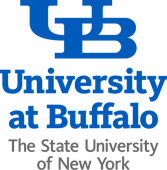Paul Vanouse has been working in emerging media forms since 1990. Interdisciplinarity and impassioned amateurism guide his art practice. His electronic cinema, biological experiments, and interactive installations have been exhibited in over 20 countries and widely across the US. Venues have included: Walker Art Center, Albright-Knox Art Gallery, Carnegie Museum, Andy Warhol Museum, New Museum, Museo Nacional de Bellas Artes in Buenos Aires, Louvre in Paris, Haus Der Kulturen Der Welt, Berlin, Zentrum fur Kunst und Medientechnologie in Karlsrhue, Centre de Cultura Contemporania in Barcelona, and TePapa Museum in Wellington, New Zealand.
Recent large-scale solo exhibitions include: Schering Foundation in Berlin (2011), Kapelica Gallery in Ljubljana (2011), Muffathalle in Munich (2012), Beall Center at UC Irvine, California (2013), and Burchfield-Penny Art Gallery in Buffalo (2019). This work has been discussed in journals including: Art Journal, Art Papers, Art News, Flash Art International, Leonardo, New Scientist, New Art Examiner, New York Times and numerous academic books on art and technology.
Vanouse’s artworks have been funded by Renew Media Arts Fellowship (formerly known as Rockefeller New Media Fellowship, 2008), Creative Capital (2006), New York State Council on the Arts project grant (2000, 2005), New York Foundation for the Arts Fellowship (2002), Pennsylvania Council on the Arts project grants (94, 95, 98), PCA Fellowship (98), National Science Foundation (1997). He has received awards at festivals including Prix ARS Electronica Golden Nica (2019) and Awards of Distinction (2013, 2010) in Linz, Austria, and Vida, Art and Artificial Life competition (2002, 2011), in Madrid, Spain. Museum commissions include the Walker Art Center for “The Consensual Fantasy Engine online” (1998), and the Henry Art Gallery in Seattle for “The Relative Velocity Inscription Device” (2002).
For nearly twenty years, Vanouse has been specifically concerned with forcing the arcane codes of scientific communication into a broader cultural language. Projects such as “Latent Figure Protocol”, “Ocular Revision” and “Suspect Inversion Center” use molecular biology techniques to challenge “genome-hype” and to confront issues surrounding DNA fingerprinting. His most recent project, “Labor” (2019), is a scent-based bio-media installation which produces the scent of human sweat—but without humans. Vanouse holds a BFA from the University at Buffalo (1990) and an MFA from Carnegie Mellon University (1996).
Experience
-
–presentProfessor of Art, University at Buffalo, The State University of New York
- Buffalo, NY, U.S.
- Website
- Article Feed
- Joined


